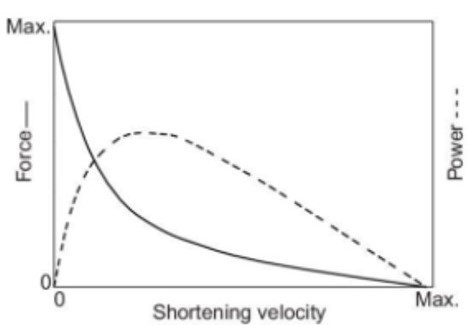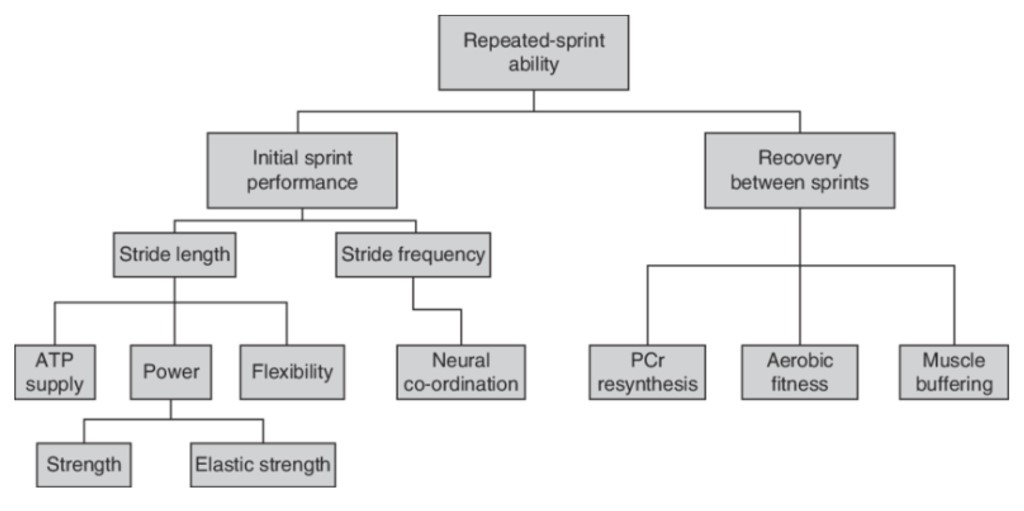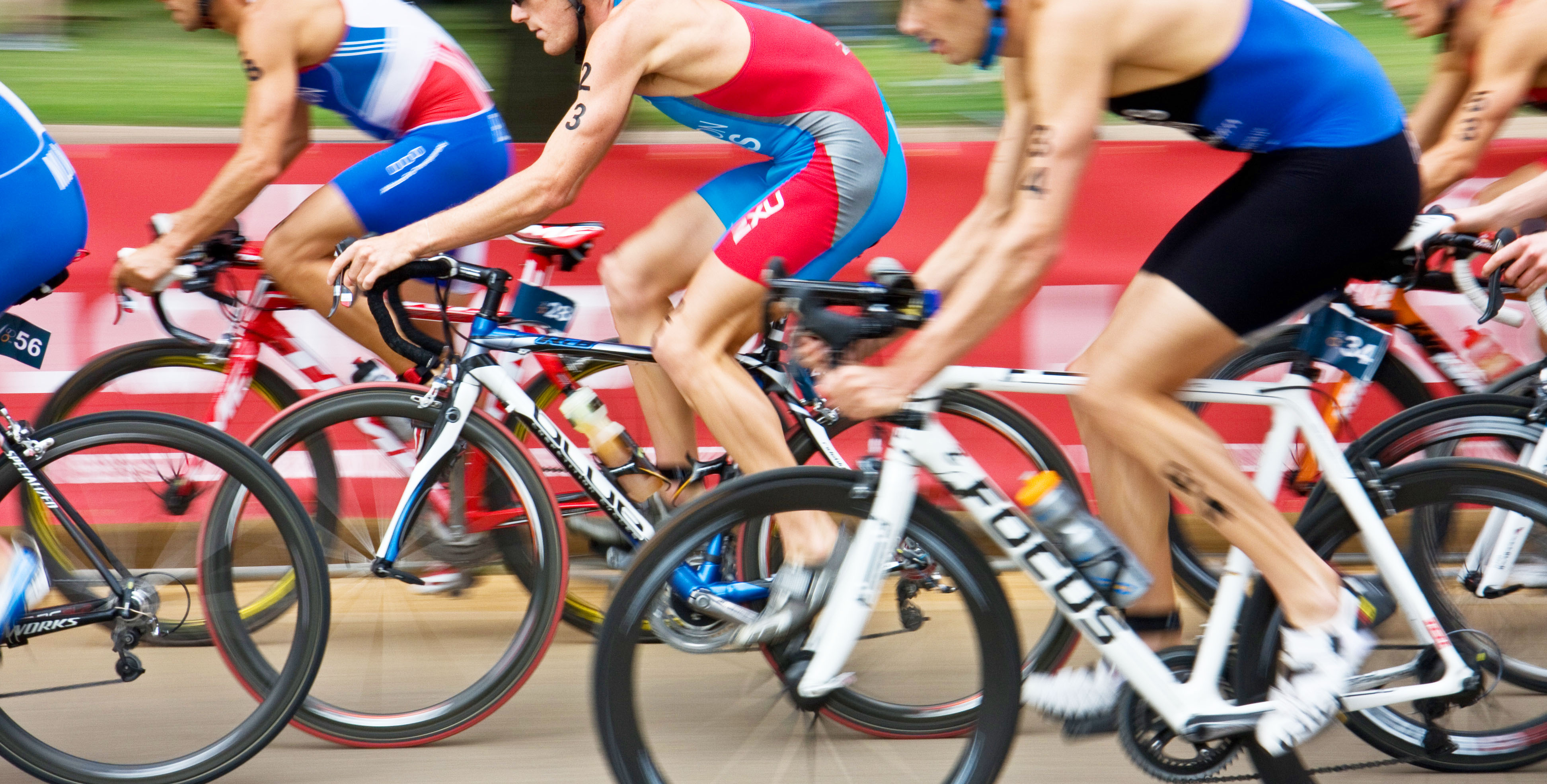Speed is a fundamental determinant of performance in many athletic events and sports. From a simple ‘straight line’ sprint, to complex actions in a team sport, speed often makes the difference to success or failure.
As with my recent article that discussed power in sport, ‘speed’ can have multiple meanings and is often overused, without a clear understanding of what it represents. When we talk about speed, it isn’t simply a case of running or pedalling to cover ground fast, we must consider how it can also refer to the movement of body parts to complete sporting actions such as a throwing, lifting or jumping action.
What Is Speed? A Definition of Speed in Sport
In its simplest form, speed can be defined as the distance travelled per unit of time, but speed in sport requires a more intricate understanding due to the different ways in which it can be used. Let us begin by looking at some components of speed using running as an example. Success in sprint events is reliant on 3 main factors that warrant their own definitions and explanations and help to explain what determines speed.
Acceleration
The rate of change in speed that occurs over a given time period. In athletic terms this is the ‘speeding-up’ section of a run or individual body part and is measured in metres per second squared (m/s-2) and calculated by dividing the change in velocity by the change in time. During the initial segment of a 100m sprint an athlete is positively accelerating. When they pass through the finish line they are negatively accelerating (or decelerating).
Maximal Speed
Maximal speed can be defined as the metres covered per second (m/s) after the sprinter has stopped accelerating. This value is strongly related to race performance and becomes more important as the sprint distance lengthens (e.g. 200 or 400m).
Speed Maintenance
Finally, speed maintenance refers to the athlete’s ability to avoid deceleration. We have all seen the runners ‘tying up’ in the back straight of a 400m race or failing to recreate the speed from early runs in the last minutes of a game. Metabolic factors are influential in these longer events. A runner’s ability to cope with the accumulation of fatigue causing hydrogen ions – a byproduct of anaerobic glycolysis towards the end of an extended sprint will affect speed maintenance. The system-crippling effects of these metabolites will hamper technical delivery and further effect speed production.
Determinants of speed
Delivering the components of speed is reliant on anthropometry, physiology and technical competence. Physically, the fastest sprinters have a high percentage of fast-twitch muscle fibres and a well-developed capacity for using high-energy phosphates. This anaerobic (without oxygen) energy production is high-yield, but limited in supply when compared to the aerobic (with oxygen) cellular respiration utilised by slow-twitch fibres for endurance events and actions. Short sprints rely predominantly on the ATP-PC system, while as the distance (and time) increase – glycolytic metabolism contributes more to the energy supply of high speed events.
In most situations, the ability to produce speed only once is not sufficient to be successful. Repeated sprint ability refers to an athlete’s capacity to deliver multiple quick ‘actions’ over the course of a game, bout or race. This alters the physiological demand on energy production and also increases the reliance on aerobic metabolism to recover in-between efforts.
Improvements in the physiological determinants of speed are of little use if they cannot be applied through appropriate technical delivery. Research suggests that mechanical factors relating to the relationship between stride length and frequency make the most meaningful impact on sprint speed. A velocity focused (right-shifted) delivery of the force-velocity curve (Figure 1) in a forward motion allows for a reduced contact time with the floor during each step – which enables the athlete to deliver more strides over the course of a sprint. The amount of force that can be delivered during this short contact time will determine the stride length possible.

Figure 1: The Force Velocity Curve, Lindstedt (2016) Adapted from Hill (1950)
Athletes are running faster than ever before in team sports. The Combine is a selection trial used by the NFL to provide information regarding college players looking to turn professional. The battery of tests has included a 40-yard dash to measure speed and acceleration for several years. Previously used for positions like running back and wide receiver, the test is now thought to be a good indication of success for all positions, including the heavy linemen who aren’t required to run such distances during a game. An explosive first step off the line of scrimmage can determine success for these players – a component of speed. In American Football, speed must be combined with technique when the ball is involved and the ability to repeat sprints over the course of a game is also crucial as fixtures are often decided during high intensity periods of play, particularly towards the end of competition.
Speed of limb movement is often overlooked despite being central to many sporting actions. For example, consider the quick hands demands of boxing and the relative speed of the fingers, arm and torso of a baseball pitcher that are combined to deliver a 100mph+ delivery. Along with running speed, quick body part movement can be developed through specific and targeted training.
Training for Speed

Figure 2: A summary of factors which should be targeted to improve repeated sprint ability (From Bishop et al, 2011)
The above diagram clearly highlights the interaction of physical and technical characteristics that can be trained to improve running speed, with attention also paid to recovery between sprints in order to deliver repeat performance. Based on the requirements of speed listed above, it should come as no surprise that speed training requires physical and technical development. A greater understanding of the determinants of speed have led to a consistent progression in speed, as highlighted by this analysis of the men’s 100m at the Olympic games.
Unless flexibility is significantly restricted, meaningful changes in speed will primarily come from increases in power due to strength and elastic strength adaptation that contribute to increased stride length. Such training should be specific and include both gym and track based exercises.
As previously mentioned, training at the right end of the force-velocity curve (Figure 1) is crucial to speed development. Force must be produced quickly to encourage a short contact time when running for example. Emphasis should be placed on the speed rather than slow and more forceful movements. In the gym, exercises such as heavy sled pulls, box jumps and front squads can all develop force production during acceleration. Neural coordination can be developed through technical drills such as downhill running and overspeed work as part of a well-structured training programme.
In conclusion, it must be stated that it’s not as easy just to say that speed is the distance travelled per unit of time. Whilst generally considered in terms of running, this definition can also be applied to the movement of limbs as part of a sporting movement or action. Speed involves an acceleration phase which is crucial, as the quicker a limb can reach maximal speed the more time it can spend there. Training to improve acceleration and subsequent speed should reflect the action required by targeting the ‘speed-end’ of the force-velocity continuum.
Using Ludum to improve speed in sport
As we have discussed, improving speed is fundamental to most types of performance in sport. Whether your goals are maximal speed or average speed over an extended distance or time, Ludum can help you to record and monitor your progress. Also, the platform can track the training load that is required to make adaptations in the range of disciplines that contribute to speed such as strength training and repeated sprint efforts. Check out the free trial to find out more details and how Ludum can help you.
View more content like this

Legendary Polish Rowing Coach Kris Korzeniowski interviewed in Crossy's Corner
The legendary rowing coach spoke with Martin Cross on rowing technique, the world’s current top coaches and more… Kris was invited back to continue the masterclass
Role of a Coach - Organising your Training Plan [2020]
The legendary rowing coach spoke with Martin Cross on rowing technique, the world’s current top coaches and more… Kris was invited back to continue the masterclass
Rowing coaching is more than just teaching sport | Rowing coaching tips from Jonathan Males
The legendary rowing coach spoke with Martin Cross on rowing technique, the world’s current top coaches and more… Kris was invited back to continue the masterclass




